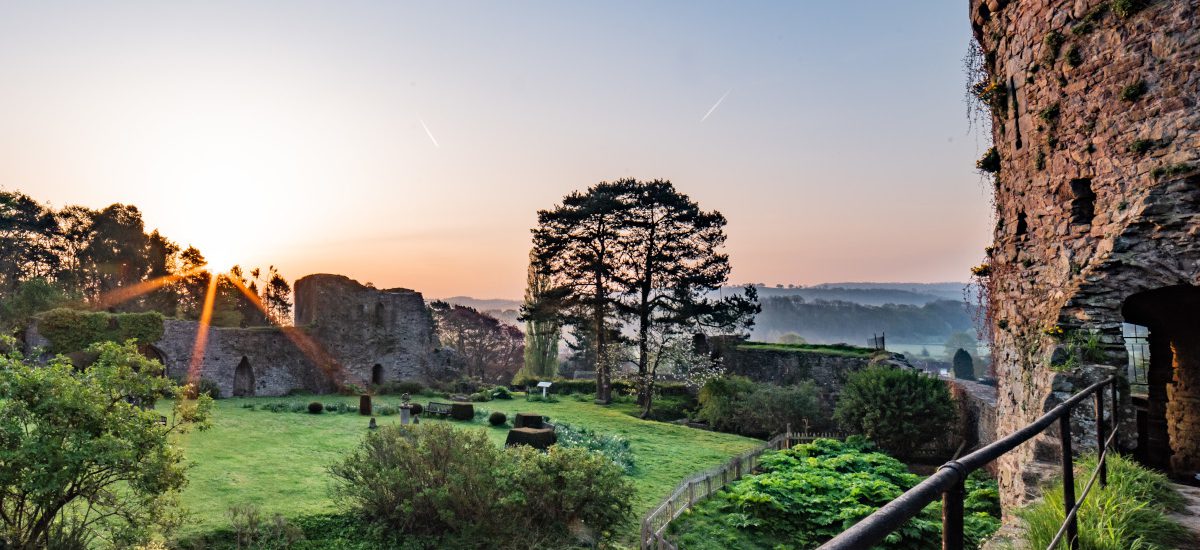Unlike most castles, Usk Castle has been a private family home since 1908.
Before this, it has been a farmhouse, a dame school, home to a fern collector and now is open to the public to share it’s beautiful, historic setting.
The Inner Ward of the castle is a large grassy area which has played host to many marquee receptions, picnics, plays, concerts and pageants.
The Castle House itself is a family home and is not open to the public except in May each year (see opening times). The gardens immediately around the house and tithe barn are private, but open once a year as part of the National Open Gardens scheme.
A very brief history of Usk Castle
This English castle was built by a Frenchman on a previously fortified, possibly Roman, site which has prehistoric connections.
It was the site of the start of the Battle of Usk in 1405 and has been a ruin since 1536
An English Castle
The boundary to Wales has moved many times. In 1955 Monmouthshire was added as an afterthought to Wales – ‘Wales and Monmouthshire’ was the official description. The debate continued until as late as 1972!
The Frenchman
Following the Norman conquest, Richard ‘Strongbow’ de Clare was allocated lands on the Welsh borders, and permitted to build a castle.
Battle of Usk
The Welsh rebellion started in 1400 by Owain Glyndwr was weakening by 1405 and the Battle of Pwll Melyn on the ridge beyond the castle was a further blow, signalling the end of the rebellion by 1406
Falling Down
Following the death of William Herbert, Earl of Pembroke, at the Battle of Edgecote in 1469, the castle reverted to the crown. It was later leased to Roger Williams of Llangybi. He was prosecuted for taking castle stone in 1536 in order to built Ty Mawr, his townhouse in Usk.
A more detailed PDF history can be downloaded here, and a detailed colour leaflet and diary documenting the creation of the gardens can be purchased for a small fee from our visitors kiosk. We also have copies of ‘Usk Castle, Priory and Town’ Knight and Johnson, for sale on request.

